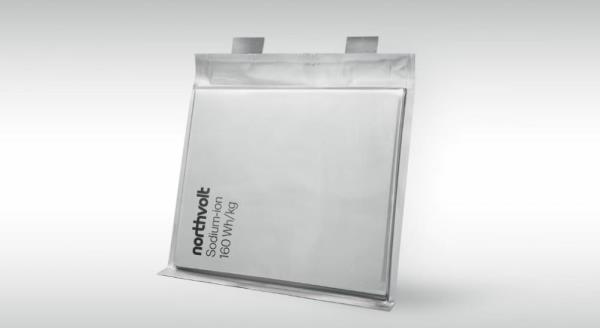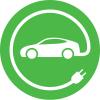Are Sodium Ion Batteries The Next Big Thing in Solar Battery Storage?
CODESOLAR
ENERGIA
S. A.
CS
Solar Batteries - Lithium - Sodium - EV electric vehicles
The sun is our partner
More than 200 years ago, a bright young chemist named Sir Humphry Davy discovered that sodium could be used as material for batteries. But for the next two centuries, sodium ion batteries remained a sleeping giant, with virtually no commercial applications.
Now, finally, the time for the rise of Na-ion batteries seems to be close. Several major battery manufacturers have announced massive plans to foray into the technology. But are sodium ion batteries really poised to conquer the world? Or is it just a fad among battery nerds? Let’s take a closer look and find out.
sodium ion batteries Source: Acculon
The development of SIBs began in the 1970s and 80s, but interest in the technology has peaked over the past decade, especially because of lithium’s shortages and the environmental impact of its mining.
To really understand if sodium batteries stand a chance against the tried-and-tested Li-ion technology, let us compare them head-to-head so we can make an informed guess.
Sodium-Ion Batteries Vs Lithium Ion Batteries
Right now, Li-ion batteries are the king of the battery world. In 2020, the global lithium ion battery market was valued at over 40 billion US dollars, and is projected to reach a staggering 92 billion dollars by 2026. But at the same time, some experts say sodium batteries (SIBs) may completely overtake lithium batteries within a few years. Here are some pros and cons of SIBs over lithium ion batteries.
What Are Sodium Ion Batteries?
A sodium ion battery, also known as SIB, is a rechargeable battery that’s very similar to a lithium ion battery – the reigning champion of batteries. Instead of lithium ions, an SIB uses sodium ions as its charge carriers.

CodeSolarEnergia S. A.
Quito, Ecuador, Sudamerica
Our experience:
Articles - Video - Photos
Fuentes: By Aniket Bhor on 9th February 2024 in Battery Storage For Solar; https://www.mysolarquotes.co.nz/blog/battery-storage-for-solar/are-sodium-ion-batteries-the-next-big-thing-/
1. SIBs are cheaper than Li-ion batteries
As you’ve probably guessed, lithium is a fancy element. It takes extensive mining to procure lithium for batteries. Li-ion batteries also use other expensive materials like copper and cobalt. Sodium ion batteries, on the other hand, use elements that are present in abundance.
Notably, the star of this battery - sodium - is a ridiculously abundant element. It’s not just in your soy sauce, sodium is the sixth most common element on Earth. It is present in the world’s oceans in salt, and there is enough salt in the oceans to cover the entire planet in a 40-stories-thick salt layer.
Moreover, the other materials used by SIBs are aluminium, iron and manganese, which are more readily available and cheaper than materials in Li-ion, such as copper and cobalt. This makes SIBs significantly cheaper.
Experts suggest that once SIBs reach a certain scale of manufacturing, they can be 30-40% cheaper than Li-ion batteries. So, if the Tesla Powerwall comes with a price tag of $11,800, a comparable Na-ion battery may cost around $8,000.
5. Sodium ion batteries are compatible with existing lithium-ion manufacturing setups
Typically, a major problem with new technologies is the need to replace most or all of the existing manufacturing setup, which requires high upfront costs. Fortunately, this is not the case with sodium ion batteries. Since their construction is so similar to Li-ion batteries, SIBs can be manufactured on the same setup with slight modifications.
This is why experts predict that a large number of lithium battery manufacturing plants may seamlessly shift to partial or complete sodium-ion manufacturing in the near future.
Here’s a graphic that summarises the differences between major battery chemistries, including SIBs and Li-ion:
2. SIBs are safer than Li-ion batteries
A major advantage of sodium ion batteries is their immunity to thermal runaway. In other words, they are non-flammable and it is really difficult to make them catch fire, or worse, explode. Lithium batteries, on the other hand, are not as safe.
While commercially available Li-ion batteries from reputable brands are rigorously tested for thermal safety, stories of burning or exploding electric vehicles aren’t uncommon.
But it's not just high temperatures where SIBs beat Li-ion batteries. They also perform exceptionally well in sub-freezing temperatures. Additionally, SIBs can also be stored at zero volts, making their storage and transportation much safer than Li-ion batteries.
Therefore, once commonplace, safety and a wider operating temperature range may be major selling points for SIBs.
Sodium Ion Battery Market Trends
Until a few years ago, sodium ion batteries seemed like some futuristic, uncertain but interesting technology. But with rapid research in the tech as well as increasing pressure on Li-ion tech to be more sustainable, sodium ion is suddenly emerging as the next big thing. Here are some places where SIB created news in recent years:
In November 2023, Swedish battery developer Northvolt announced their first sodium ion battery. With a class-leading energy density of 160 Wh/kg, the battery cells promise cost-efficient and sustainable energy storage for various purposes.
In the same month as Northvolt, BYD made headlines by announcing its 30 GWH sodium ion battery plant. Currently the world’s largest EV maker, BYD is investing a whopping RMB 10 billion (NZD 2.3 billion) in the facility.
US-based Acculon announced in January 2024 that it is starting production of sodium ion battery modules for mobility and stationary applications. The company plans to start producing at a capacity of 2 GWh from mid-2024
3. SIBs are more sustainable than Li-ion batteries
Lithium ion batteries have played a major role in the growth of solar power, and in some places, they also reduce carbon emissions by replacing diesel or petrol generators. However, they also use materials that require extensive mining, which is a major limitation.
Sodium ion batteries, on the other hand, use naturally abundant materials and therefore have minimal carbon emissions in the manufacturing process - comparable to your soy sauce, perhaps!
4. SIBs are heavier than Li-ion batteries
Sodium is a heavier element than lithium. On the periodic table, you can find it in the same group as lithium, but one row below it. Sodium’s atomic weight of 23 g/mol makes it thrice as heavy as lithium, whose atomic weight is just 6.9 g/mol.
Naturally, sodium ion batteries are heavier than lithium batteries. However, they are not thrice as heavy, because sodium is only one of the components that goes into building an SIB. Moreover, despite their low energy density, SIBs have better high-power characteristics, which means they can offer more continuous power output per kg than Li-ion.
Its higher weight, and consequently lower density may make it unsuitable for high-performance electric cars. However, they can be a wonderful economical alternative to electric caddies, golf carts, etc.
And as far as residential applications are in question, a little extra weight doesn’t hurt (except if you drop it on your toe).
California-based Natron Energy already sells sodium ion batteries and promises perks such as 50,000 life cycles, 8-minute rapid charging, etc.
UK-based Faradion calls itself a world leader in non-aqueous sodium ion cell technology with a catchy promise of ‘lithium ion performance at lead-acid prices’
Indian tech giant KPIT recently unveiled its proprietary sodium-ion battery technology, and is now looking for manufacturing partners.
UK-based research firm IDTechEx mentions that worldwide, the capacities of sodium ion manufacturing facilities that have been announced so far already crossed the 100 GWh mark. This may sound much lower than the cumulative lithium ion capacity of 1.6 TWh, but SIBs are catching up fast, and there is no denying that.
Conclusion: Will Sodium Ion Conquer The Battery World?
The above question can simply be rephrased as ‘Can sodium ion beat lithium ion?’ And the answer to that is, we believe, not so dramatic (i.e. a ‘yes’ or ‘no’). Sodium ion’s obvious advantages make it an excellent choice for numerous applications, such as residential battery storage.
However, there are areas where lithium ion batteries will still maintain their superiority, such as high-performance mobility. At a time when sports cars are trying to shed every kilogram of weight while maintaining power and range, it is unlikely that sodium ion batteries will make it to a Tesla or a Porsche.
That said, there is a gigantic world of applications still available after we exclude performance EVs, which means the answer to the above question would be this - ‘Sodium ion batteries have the potential to almost entirely conquer the battery world’, and the word ‘almost’ is important here.



